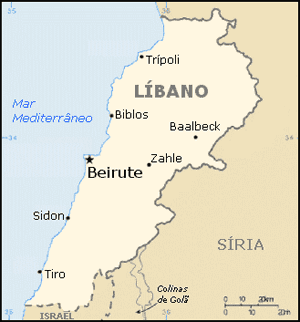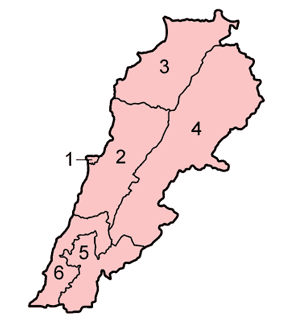 Instituto de Odivelas
14 January 2010
Instituto de Odivelas
14 January 2010
 Base Aérea nº 6
9 November 2009
Base Aérea nº 6
9 November 2009
 Marinha
3 August 2009
Marinha
3 August 2009
 Visit to the Air Force Base No. 1
19 May 2009
Visit to the Air Force Base No. 1
19 May 2009
 Naval School - Opening of the School Year
14 November 2008
Naval School - Opening of the School Year
14 November 2008
The Lebanon (Lebanon means “white”, from the whiteness of the snow that covers the mountains), is a country of western Asia located in the eastern end of the Mediterranean, bordering to the North and East with Syria and to the South with Israel, in the region of the Fertile Crescent, where the first great civilizations of humanity emerged.
It has a coastline approximately 225 km long and a width of 74 km, and its geography includes a wide coastal plain and two mountain ranges to the North and to the South, the Mount-Lebanon and Anti-Lebanon Mountains. The fertile Bekaa Valley, with its Litani and Orontes Rivers, separates these mountains. Its climate is typically Mediterranean with hot and dry summers and cold and wet winters.
It is the historic land of the Phoenicians, who created the first alphabet and whose maritime lore fructified in the region for more than 2,000 years.

The Lebanese Republic was created in 1926. Occupied during World War II, it recovered its independence on November 22, 1943, and the French troops left in 1946. Since independence, Lebanese history has been marked by alternate periods of stability and convulsion, affecting its strong economic and tourist potential due to Beirut’s position as a regional centre of business and finance. The various armed conflicts, whether internal or external, which have devastated the country since 1976, gave rise to an international intervention by the United Nations peace forces, in an endeavour to prevent new hostilities and contribute towards its stabilization.

Lebanon’s population is composed of various ethnic and religious groups: Muslim (Shia and Sunni), Christian (Maronites, Greek Orthodox, Graeco-Catholic Melchites, Armenian Christians, Assyrian Christians, Copts) and others, including the Alawite and Druze sects. In all, the state recognizes the existence of eighteen religious communities. 59.7% of Lebanese are Muslim and 39% Christian (divided amongst the above named groups).
In accordance with data from July 2007, Lebanon has a population of 3,925,502 (Beirut is the most populous city with approximately 800,000 inhabitants). With regard to age structure, 66% of the population is aged between 15 and 64, with a life expectancy of 70 years in the case of men and of 75 years in the case of women. Population is mainly distributed in the coastal cities (32% in Beirut and its periphery) and 20% in the province of North Lebanon.
Lebanon is divided in six provinces: Beirut (1), Mount Lebanon (2), North Lebanon (3), Bekaa (4), Nabatieh (5) and South Lebanon (6).

Lebanon is a parliamentary republic, and its Constitution consecrates the division of power into three branches, the executive, the legislative and the judiciary. The President is elected by Parliament and members of parliament by universal suffrage. In accordance with the law, the offices of President of the Republic, Prime Minister and Speaker of Parliament must be filled respectively by a Christian Maronite, a Sunni Muslim and a Shia Muslim.
© 2006-2016 Presidency of the Portuguese Republic
 [D]
[D]